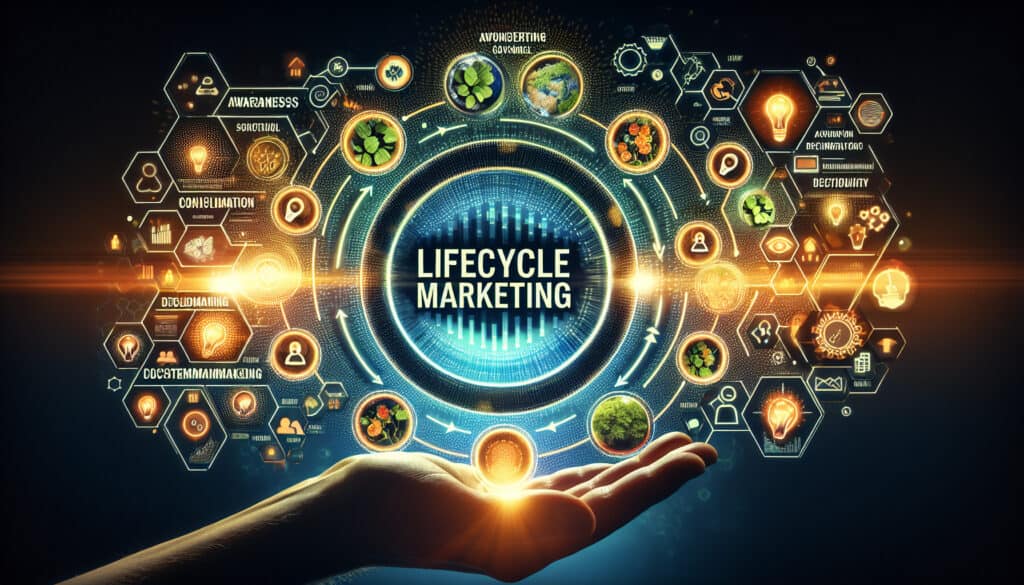To create a personalized 营销 strategy that adapts to the customer’s stage in the customer lifecycle.
- 方法: 客户与营销, 经济学, 产品设计
生命周期营销

生命周期营销
- 客户体验, 客户旅程制图, 营销, 营销策略, 产品开发, 产品生命周期, 产品生命周期管理, 用户体验(UX), 价值主张
目标
如何使用
- A marketing approach that focuses on creating a long-term relationship with customers by providing them with relevant and valuable experiences at every stage of their journey, from awareness to advocacy.
优点
- Increases customer loyalty and lifetime value; Improves the customer experience.
缺点
- Can be complex to implement and manage; Requires a deep understanding of the customer journey.
类别
- 客户与营销
最适合:
- Building long-term relationships with customers to increase their loyalty and lifetime value.
Lifecycle Marketing encompasses various stages that align with design thinking methodologies employed in product development and innovation. For instance, during the awareness phase, businesses can leverage data analytics to understand potential customer needs, often incorporating user 人们 derived from research within design and engineering contexts, ensuring their products or services resonate with target demographics. Industries such as technology, consumer goods, and healthcare frequently utilize this approach to create seamless customer interactions through personalization techniques that evolve over time, directly influencing product iterations based on user feedback and engagement metrics. Collaboration among cross-functional teams, including marketing, design, and engineering, is instrumental in continuously refining customer touchpoints, while the engagement phase allows companies to introduce loyalty programs or subscription models that encourage repeat usage, increasing customer lifetime value. In this way, Lifecycle Marketing aligns marketing efforts closely with product development, ensuring that changes in customer preferences inform future design iterations and that post-purchase support enhances user satisfaction, leading to a more profound advocacy from loyal customers. Feedback loops can be established whereby customer insights gathered post-sale inform subsequent product features or updates, reinforcing a commitment to evolving products and services based on real-world usage and customer experience. Such methodologies not only drive retention but can also reduce the cost of customer acquisition, maximizing the effectiveness of marketing resources.
该方法的关键步骤
- Map customer touchpoints across the lifecycle stages: awareness, consideration, purchase, retention, and advocacy.
- Create personalized content and messaging tailored to each stage of the customer's experience.
- Implement automation tools to manage customer interactions and deliver timely communications.
- Develop loyalty programs that reward repeat purchases and long-term engagement.
- Engage customers through feedback loops, soliciting input and acting on suggestions.
- Utilize data analytics to measure engagement, satisfaction, and lifetime value metrics.
- Adjust marketing strategies based on performance metrics, ensuring continuous improvement.
- Strengthen community-building efforts to enhance customer advocacy and peer-to-peer recommendations.
专业提示
- Implement predictive analytics to anticipate customer needs and personalize their experiences, enhancing engagement across touchpoints.
- Leverage user-generated content and community-building strategies to cultivate loyalty and encourage brand advocacy among existing customers.
- Use A/B testing for continuous optimization of marketing communication channels, ensuring relevance and maximizing customer retention rates.
历史背景
1960
1980
1983
1990
1995
2000
2010
1950
1980
1980
1986
1994
1995
2000
(如果日期不详或不相关,例如 "流体力学",则对其显著出现的时间作了四舍五入的估计)。














相关文章
肌肉骨骼不适调查表
多变量测试(MVT)
多元回归分析
动作捕捉系统
MoSCoW 方法
情绪中值测试